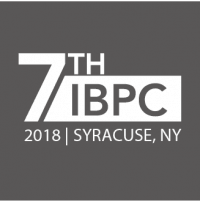Conference Editor
Jianshun Zhang; Edward Bogucz; Cliff Davidson; Elizabeth Krietmeyer
Keywords:
Building simulation calibration Thermal comfort Healthcare facility
Location
Syracuse, NY
Event Website
http://ibpc2018.org/
Start Date
25-9-2018 1:30 PM
End Date
25-9-2018 3:00 PM
Description
Design activity regarding healthcare buildings must not only address the energy efficiency aspects but also account for the indoor thermal comfort conditions. Indeed, the occupants of this category of buildings are affected by different kinds of health issues. Thus, particular efforts are required in order to ensure conditions adequate for therapies and medical treatments. Simulation can be a helpful tool in designing new buildings, particularly in case of complex clinics and hospitals. When analyzing existing facilities, a proper calibration is a necessary step to reduce discrepancies between simulated and measured performance. This improves the reliability of the model itself and allows its use for many purposes, from the assessment of energy performance to the evaluation of indoor thermal comfort, under a broader range of operating conditions and use patterns. In the present contribution, a calibrated model of a healthcare facility in Vienna, Austria, was developed for the assessment of both thermal performance and comfort conditions. The facility, built in the early ‘90s with later expansions, consists of different rooms and spaces in which several therapeutic activities are performed. Long-term measurements of the air temperature were conducted every 10 minutes for the period between March and June 2015 and used for calibrating the model. During the same period, occupants were interviewed concerning their thermal comfort sensations and detailed shortterm measurements were collected to calculate thermal comfort indicators, including Fanger’s Predicted Mean Vote and Predicted Percentages of Dissatisfied. The same indices were also calculated through the calibrated simulation model and compared to experimental results and subjective evaluations. The resulting model is finally used to extrapolate the assessment of thermal comfort conditions beyond the measurement period.
Recommended Citation
Zaniboni, Luca; Pernigotto, Giovanni; Schuß, Matthias; Kiesel, Kristina; Gasparella, Andrea; and Mahdavi, Ardeshir, "Use of calibrated building simulation to investigate comfort conditions in a healthcare facility" (2018). International Building Physics Conference 2018. 6.
DOI
https://doi.org/10.14305/ibpc.2018.ms-6.06
Creative Commons License

This work is licensed under a Creative Commons Attribution-NonCommercial-Share Alike 4.0 International License.
Use of calibrated building simulation to investigate comfort conditions in a healthcare facility
Syracuse, NY
Design activity regarding healthcare buildings must not only address the energy efficiency aspects but also account for the indoor thermal comfort conditions. Indeed, the occupants of this category of buildings are affected by different kinds of health issues. Thus, particular efforts are required in order to ensure conditions adequate for therapies and medical treatments. Simulation can be a helpful tool in designing new buildings, particularly in case of complex clinics and hospitals. When analyzing existing facilities, a proper calibration is a necessary step to reduce discrepancies between simulated and measured performance. This improves the reliability of the model itself and allows its use for many purposes, from the assessment of energy performance to the evaluation of indoor thermal comfort, under a broader range of operating conditions and use patterns. In the present contribution, a calibrated model of a healthcare facility in Vienna, Austria, was developed for the assessment of both thermal performance and comfort conditions. The facility, built in the early ‘90s with later expansions, consists of different rooms and spaces in which several therapeutic activities are performed. Long-term measurements of the air temperature were conducted every 10 minutes for the period between March and June 2015 and used for calibrating the model. During the same period, occupants were interviewed concerning their thermal comfort sensations and detailed shortterm measurements were collected to calculate thermal comfort indicators, including Fanger’s Predicted Mean Vote and Predicted Percentages of Dissatisfied. The same indices were also calculated through the calibrated simulation model and compared to experimental results and subjective evaluations. The resulting model is finally used to extrapolate the assessment of thermal comfort conditions beyond the measurement period.
https://surface.syr.edu/ibpc/2018/MS6/6




Comments
If you are experiencing accessibility issues with this item, please contact the Accessibility and Inclusion Librarian through lib-accessibility@syr.edu with your name, SU NetID, the SURFACE link, title of record, and author & and reason for request.